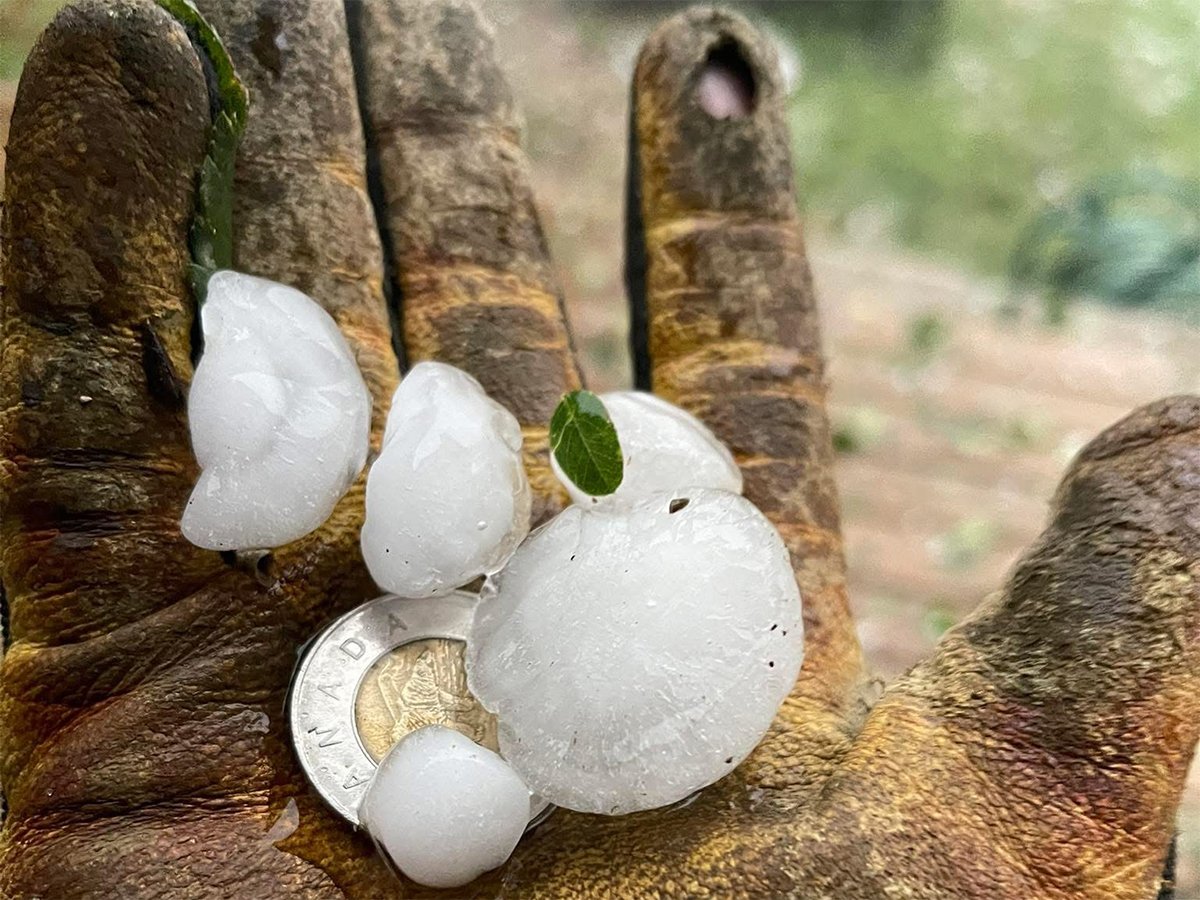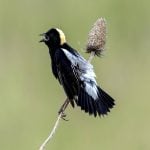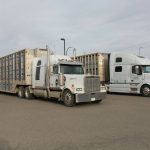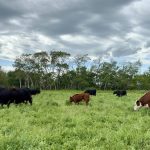Ag Canada scientists weigh the cost and benefit of the machine designed to pulverize weed seeds during harvest
LACOMBE, Alta. — Agriculture Canada began working with the Harrington Seed Destructor last fall to see how it handles weed seeds in western Canadian fields.
The machine was built in Australia to help control weed seeds during harvest.
“Harvest weed seed control attempts to stop viable weeds seeds from going back into your seed bank,” said Breanne Tidemann, a research scientist with the federal department.
“Chaff goes into the seed destructor and into a cage mill and basically gets pulverized and it kills the seeds so that they’re not going to grow the next year,”
Read Also

Half million acres of Alberta crops affected by massive hail storm
Late August hail storm catches farmers in prime harvest mode, damaging half million acres of crops in Alberta.
Agriculture Canada received the seed destructor too late to perform field trials last fall, but stationary testing work was performed at a PAMI research facility in Hum-boldt, Sask.
“One of the common questions is what about weed seed size? Will it actually control some of our small seeded weeds? We didn’t know,” Tidemann said during Murray Hartman’s Science-O-Rama in Lacombe.
“In Australia, they have been primarily focused on larger seeded weeds, so no one had really looked at that.”
Different weed species were used, including kochia, green foxtail, false cleavers, volunteer canola and wild oats.
Various sizes of canola seed were also tested.
“The reason we wanted to do that was that by using the same species, you have the same seed shape, the same type of seed coat, the same seed structure. The only difference was seed size,” Tidemann said.
The researchers also evaluated weed seed volume, chaff volume and chaff type.
“We also looked at weed seed number, between 10 canola seeds in a five-gallon pail of chaff up to a million canola seeds in a five-gallon pail of chaff,” Tidemann said.
“Chaff volume, so running seeds through with no chaff to up to eight five-gallon pails of chaff with 10,000 canola seeds dispersed throughout. As well, as chaff type, so does it matter what kind of crop is going through in terms of controlling? Barley, canola, pea chaff were used.”
The seeds and chaff were taken to Agriculture Canada’s research centre in Lacombe for evaluation after they were run through the seed destructor. Technicians hand picked through the samples, looking for viable seeds, and then tried to germinate them.
Seed destruction improved slightly to 99 percent from 98.4 percent as the seed size increased in the canola seed size evaluation.
“Does anyone in the field care about a one percent or half percent difference? Probably not,” Tidemann said.
“Yeah, there is an impact of seed size, but in the field they are going to get really good control not matter what the seed size is.”
The weed seeds tested differently on a number of measures beyond size, but there was 97 to 98 percent control of every weed seed tested.
The impact of seed volume was affected by sample size because any seed that survived dropped the control by 10 percent when there were only 10 seeds in a five-gallon pail of chaff.
The control was 84 percent when only 10 seeds were tested, but the control was up in the 97 to 98 percent range once 100 seeds or more were tested. The control increased when a small amount of chaff volume was added.
“What might be happening in there, we don’t really know, but there is enough material in there that the seeds are getting bounced around in there more times and you end up with less seeds being viable, that’s the hypothesis,” Tidemann said.
The control also began to drop off when a high volume of chaff was run through the seed destructor, showing that there might be a point where the chaff begins to protect some of the seeds.
“Regardless, we went from just over 98 percent control to just over 99 percent control,” Tidemann said. “Probably not going to make a big difference when we get it into the field.”
There was a slight control difference between the different chaff types with canola’s chaff having the lowest control, which Tidemann said could have been caused by volunteer canola in the chaff. However, the control ranged from 98 to 98.6 percent, which is high regardless of chaff type, she added.
“In summary, if you can get the seeds into the destructor, pretty much 98 percent of them are going to die,” Tidemann said.
Agriculture Canada tested a Harrington Seed Destructor that tows behind a combine, which has its own 200 horsepower power plant.
The Integrated Harrington Seed Destructor was launched in March 2016, which installs the seed smashing technology into the back of a combine as a retrofit.
However, Tidemann said it will be a challenge getting it into Canadian combines.
The Integrated Harrington Seed Destructor costs approximately $160,000, and 15 working units operated in Australia last year.
Tidemann said tests found that operators of the original machine were able to run their combines at capacity, but operators of the new version may have to slow down because it draws 60 h.p. from the combine.
“In Australia, they talk about Class 8 and Class 7 combines, and they basically say run a Class 8 combine at a Class 7 capacity once you integrate the seed destructor into it.”
















